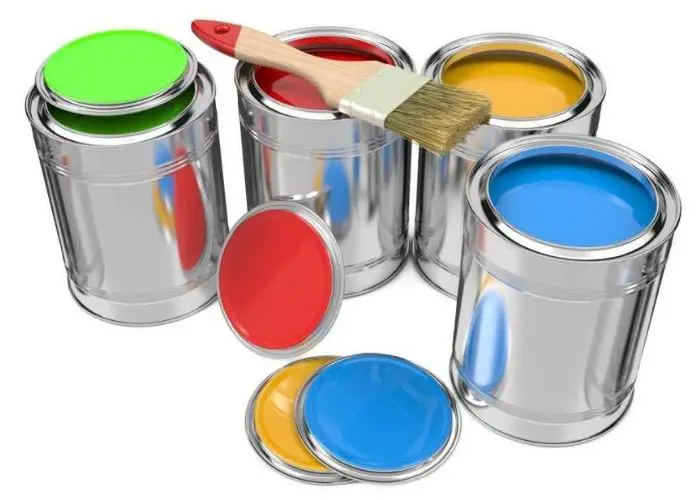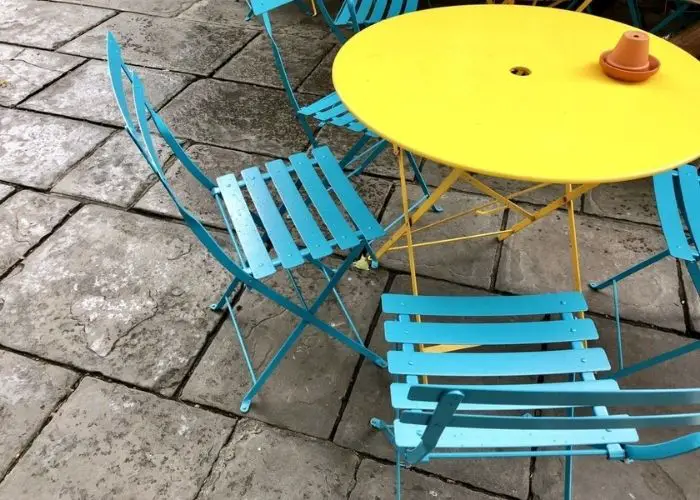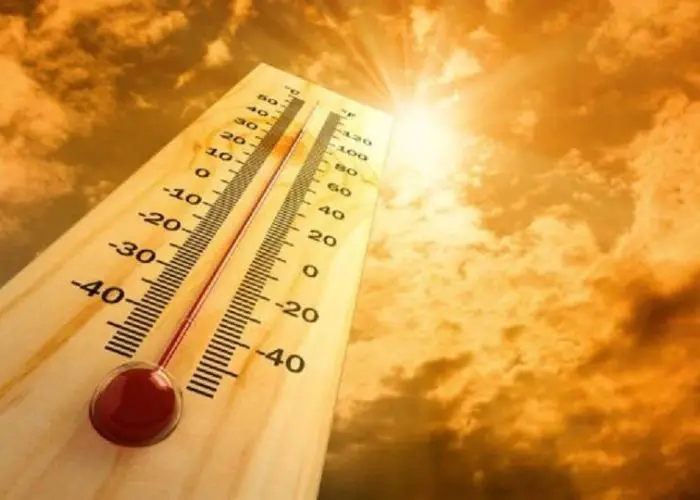There is a lot of debate surrounding the topic of whether or not acrylic paint is heat resistant.
Some people say that it is, while others maintain that it is not. So, what is the truth?
In this blog post, we will explore the topic in-depth and try to provide some definitive answers.
We will also look at how to make acrylic paint heat-resistant and what temperatures are safe for its use.
So, Is Acrylic Paint Heat Resistant? Let’s find out.
Is Acrylic Paint Heat Resistant?
The answer is that it depends on what temperature you are trying to use the paint at. Acrylic paint is a plastic made from polymer emulsion, and it is not heat resistant at high temperatures. However, it can withstand low temperatures without any problems.
What is Heat-Resistant Paint?
Heat-resistant paint is a paint that is designed to withstand high temperatures without being damaged.
It is usually made from a special type of resin that is resistant to heat, such as polyurethane or epoxy.
So, What Temperature Can Acrylic Paint withstand?
The general consensus is that anything below 80 degrees Fahrenheit is safe for acrylic paint.
However, you should always check the specific instructions on your paint can before using it at any temperature.
Will Acrylic Paint Start Melting when Exposed to Sun?

No, acrylic paint will not start melting when exposed to sunlight. However, if it is exposed to direct sunlight for extended periods of time, it can become brittle and crack.
Acrylic paint is also not UV resistant, so it will fade over time if exposed to sunlight. Acrylic oil paintings are the most preferred to be placed in direct sunlight.
How to Make Acrylic Paint Heat Resistant
The following steps have to be considered for acrylic paint to be heat resistant.
- Use a paint primer: This will help to create a barrier between the paint and the surface you are painting on.
- Use heat-resistant acrylic paint: There are specially formulated types of acrylic paint that are designed to be heat resistant.
- Add a heat-resistant additive: You can purchase special additives to make your acrylic paint more resistant to heat.
- Apply a varnish: Once your paint is dry, you can apply a layer of varnish to protect it from heat further.
Does Low Temperature Affect Acrylic Paintings?
Cold temperatures can affect acrylic paintings. When it’s cold, the paint can become hard and break easily. It can worsen if the acrylic painting is in freezing temperatures for a long time.
Cold weather also makes the paint take longer to dry. That means it stays wet for a longer time and can get dusty.
To keep acrylic paintings safe, store them in a place with a temperature between 65°F and 75°F (18°C to 24°C).
If you need to move them in the cold, wrap them up well and keep them warm. That way, you can protect the paintings and ensure they last a long time.
Is Tempera Paint Heat Resistant?
Tempera paint is not as durable as acrylic paint, so it is not as heat resistant.
Tempera is a water-based paint, and it is made from pigments suspended in a water-soluble binder.
As a result, it is not as flexible as acrylic paint, so it is more likely to crack when exposed to high temperatures.
However, it is still possible to make tempera paint heat-resistant by adding varnish or using a heat-resistant primer.
You would also want to find out the difference between tempera and acrylic and whether tempera is skin safe paint.
Is Latex Paint Heat Resistant?

No, latex paint is not heat resistant. Latex is a type of synthetic rubber, and it is made from polymers that are sensitive to high temperatures.
This means that latex paints will start to melt and deform at high temperatures.
However, there are a few things that you need to keep in mind to make your paint job last for years to come.
First, choose high-quality paint such as acrylic latex paint, considering the difference between latex and acrylic paint.
Second, be sure to follow the manufacturer’s instructions carefully. Third, always test the paint on a small area before applying it to the entire surface.
And finally, keep in mind that heat resistance is relative. Latex paint can withstand temperatures up to about 200 degrees Fahrenheit before breaking down.
So if you are planning on using your oven or stovetop as a painting surface, be sure to use heat-resistant paint.
Interesting Read: Can You Mix Acrylic and Latex House Paint?
Is Enamel Heat Resistant?
Enamel paint is more durable than latex paint, so it is more resistant to high temperatures.
Enamel is a type of paint that is made from pigments suspended in a resin. This makes it semi flexible plastic and less likely to crack when exposed to heat.
However, enamel paint is not completely heat resistant. It can withstand temperatures up to about 300 degrees Fahrenheit before breaking down.
So if you are looking for heat-resistant paint, enamel is a good option.
Read Also: How Long Does It Take for Enamel Paint to Dry
Heat Resistant Paint for Metal

There are many different types of heat resistant paint that can be used on metal.
The best type of paint to use will depend on the type of metal you are painting and the temperature it will be exposed to.
For example, if you are painting a metal surface that will be exposed to high temperatures, you will need to use a heat-resistant paint.
Some examples of heat resistant paint include epoxy paint, silicone-based paint, and urethane-based paint.
When choosing a heat resistant paint, it is important to choose one that is specifically designed for the type of metal you are painting.
For instance, if you are painting a steel surface, you will need to use a heat-resistant paint designed for steel use.
You can find these types of paints at most hardware stores or home improvement stores.
How Can You Make Your Paintings Last Longer?
To make your paintings last longer, it is important to use high-quality paint and to follow the manufacturer’s instructions carefully.
It is also good to test the paint on a small area before applying it to the entire surface.
When storing your paintings, keep them out of direct sunlight or high temperatures, especially oil painting. And finally, remember that heat resistance is relative.
So if you are planning on using your oven or stovetop as a painting surface, be sure to use heat-resistant paint!
Does Acrylic Paint Melt in Heat
One common question about acrylic paint is whether it melts in heat. The answer to this question depends on the type of heat that is applied and the composition of the paint.
Most types of acrylic paint will not melt in direct sunlight or under a standard heat lamp.
However, if the paint is heated to a very high temperature, it may begin to meltdown.
How Hot Can Acrylic Paint Get
The maximum temperature at which acrylic paint can be safely used is approximately 150 degrees Fahrenheit.
However, if the paint is exposed to a higher temperature for an extended period of time, it may start to melt and lose its adhesion.
Can You Use Acrylic Paint Outside
Yes, acrylic paint can be used outside. It is an outdoor paint and can be used on walls, fences, and other surfaces.
However, keep in mind that it is not weatherproof and will not withstand harsh weather conditions.
Interesting read: Difference between enamel and latex.
FAQs
Does acrylic paint withstand heat?
Acrylic paints withstands heat better than latex paint. It is also more resistant to fading when exposed to sunlight. However, acrylic is not heat-resistant enough to be used on surfaces that will come into direct contact with flames, such as a fireplace or stove.
What is the highest temperature that acrylic paint can withstand?
The maximum safe working temperature for most types of acrylic paint is between 140-150 degrees Fahrenheit. Some types of high-quality acrylics can withstand temperatures up to 200 degrees Fahrenheit.
What is the difference between heat resistant and flame retardant paint?
Flame retardant paints are designed to resist catching fire, while heat-resistant paints can withstand high temperatures without being damaged.
Will acrylic paint catch fire?
No, acrylic paint is not flammable, so it will not catch fire.
Can you put acrylic paint in the oven safely?
Yes, baking acrylic paint in the oven is possible. However, it is not recommended because the paint will start to cook and will not be as vibrant as when it is first applied. If you do choose to bake acrylic paint in the oven, make sure that it is at a low temperature and that you are monitoring it closely.
What is the best heat-resistant paint for metal?
There are many types of heat-resistant paint for metal, but one of the most popular is an epoxy-based paint. This type of paint can withstand temperatures up to 500 degrees Fahrenheit.
Are oil-based paints heat resistant?
Oil-based paints generally have high heat tolerance than water-based paints. Water-based paint is made with water, while oil-based paint contains oil and other solvents. The water in water-based paint evaporates as the paint dries, which leaves the film of paint susceptible to heat damage. Oil-based paints, on the other hand, contain a higher percentage of solvents, so the evaporation process is slower and the paint is less likely to suffer damage from heat.
How to paint the sun with acrylics
The first step in painting the sun with acrylics is to mix yellow and white together to create a light yellow color. Next, use a small round brush to paint a circle in the middle of your canvas that is the size of the sun. Once the circle is dry, add a second layer of paint to make it brighter. Next, use a larger round brush to paint the sky around the sun. The sky should be a light blue color. Add more blue to the sky if you want it to be darker. Once the sky is dry, use a smaller brush to paint white clouds in the sky.
Conclusion
is acrylic paint heat resistant? Acrylic paint is a type of paint that is made from pigments suspended in a resin.
This makes it more flexible and less likely to crack when exposed to heat. However, acrylic paint is not completely heat resistant.
It can withstand temperatures up to about 200 degrees Fahrenheit before breaking down. So if you are looking for heat-resistant paint, acrylic is a good option.










Leave a Reply